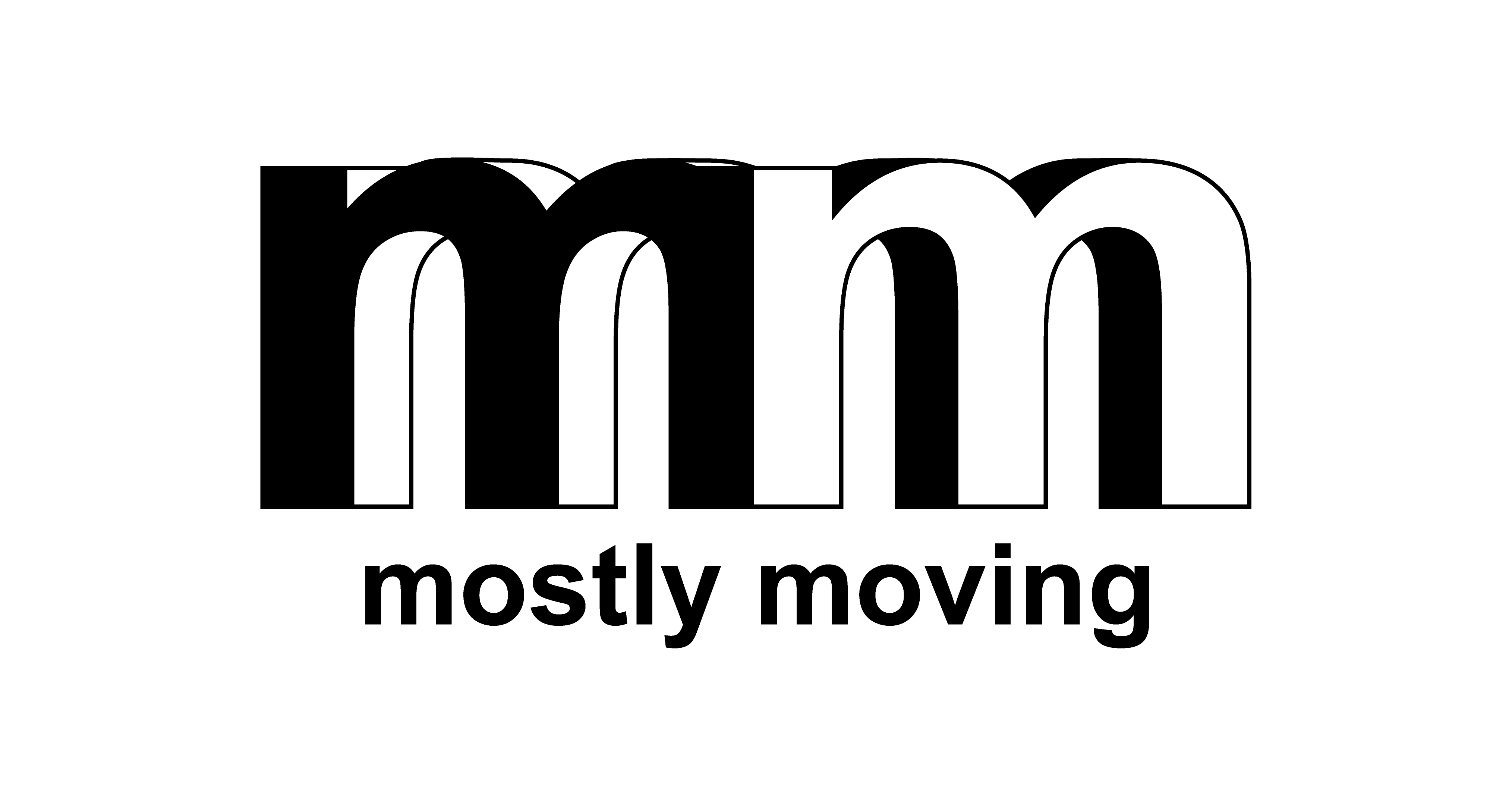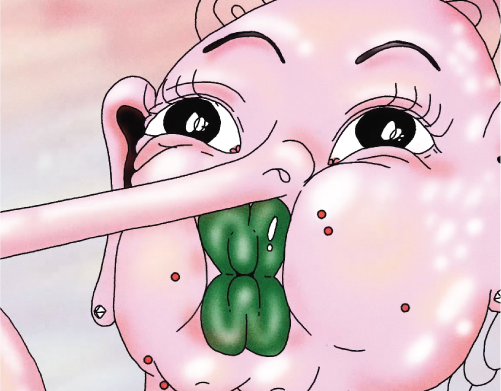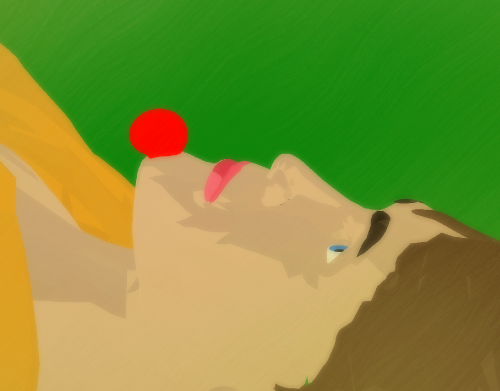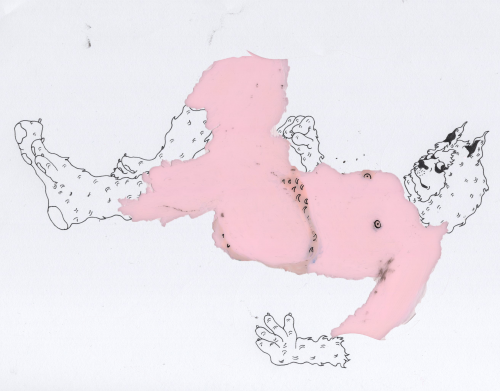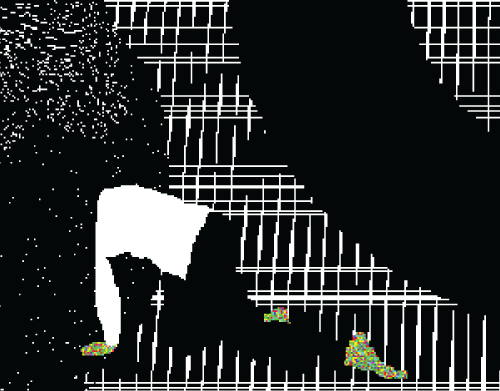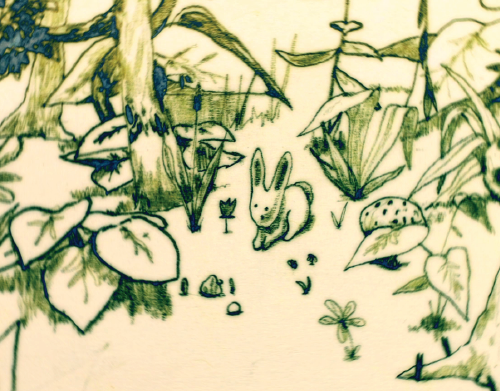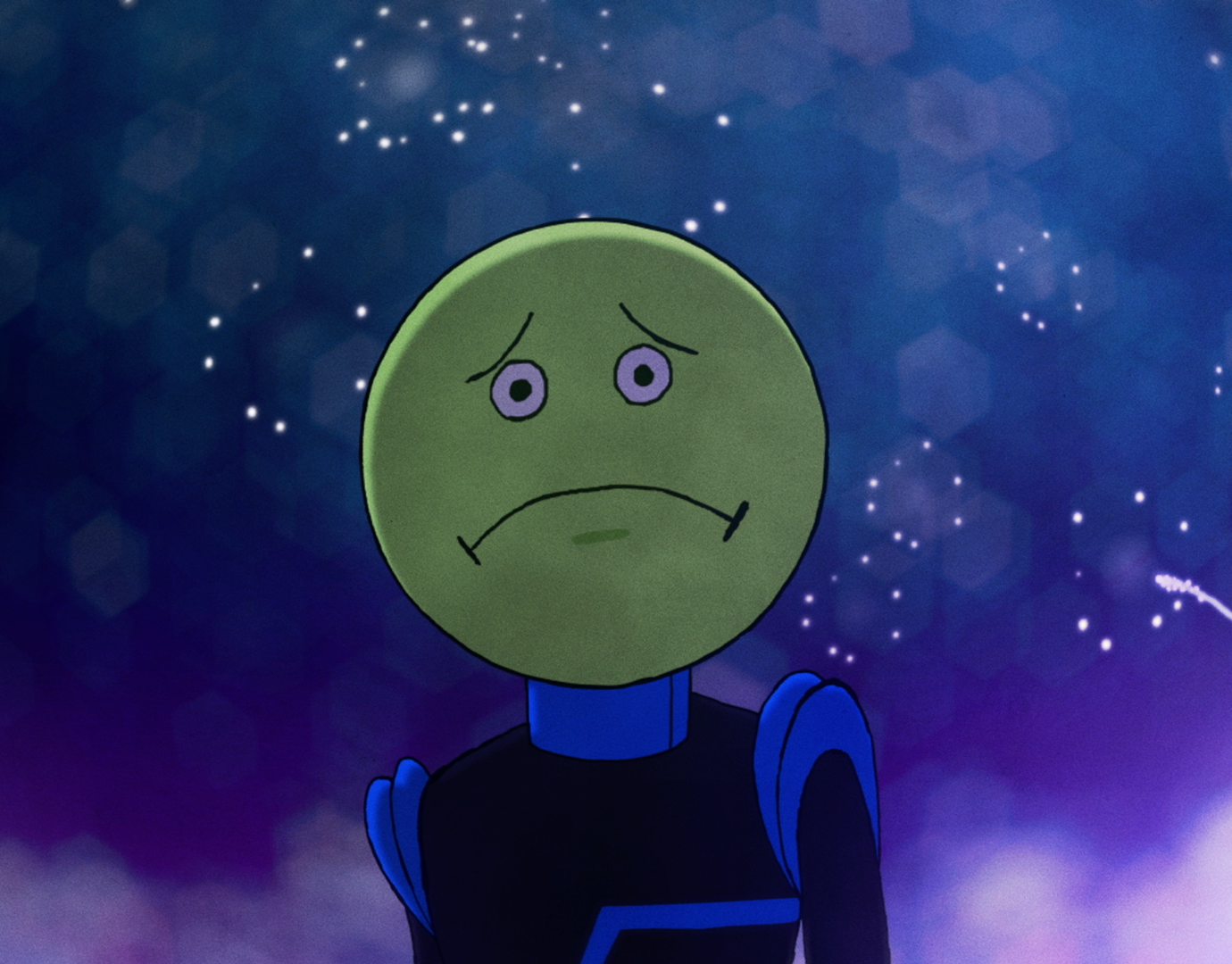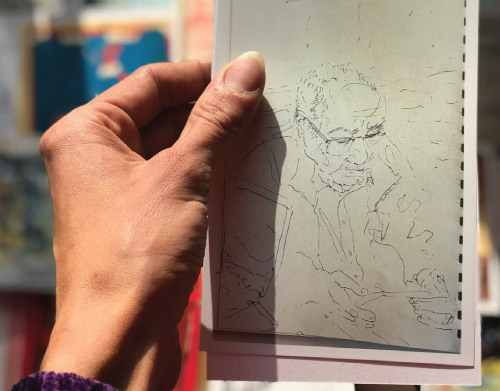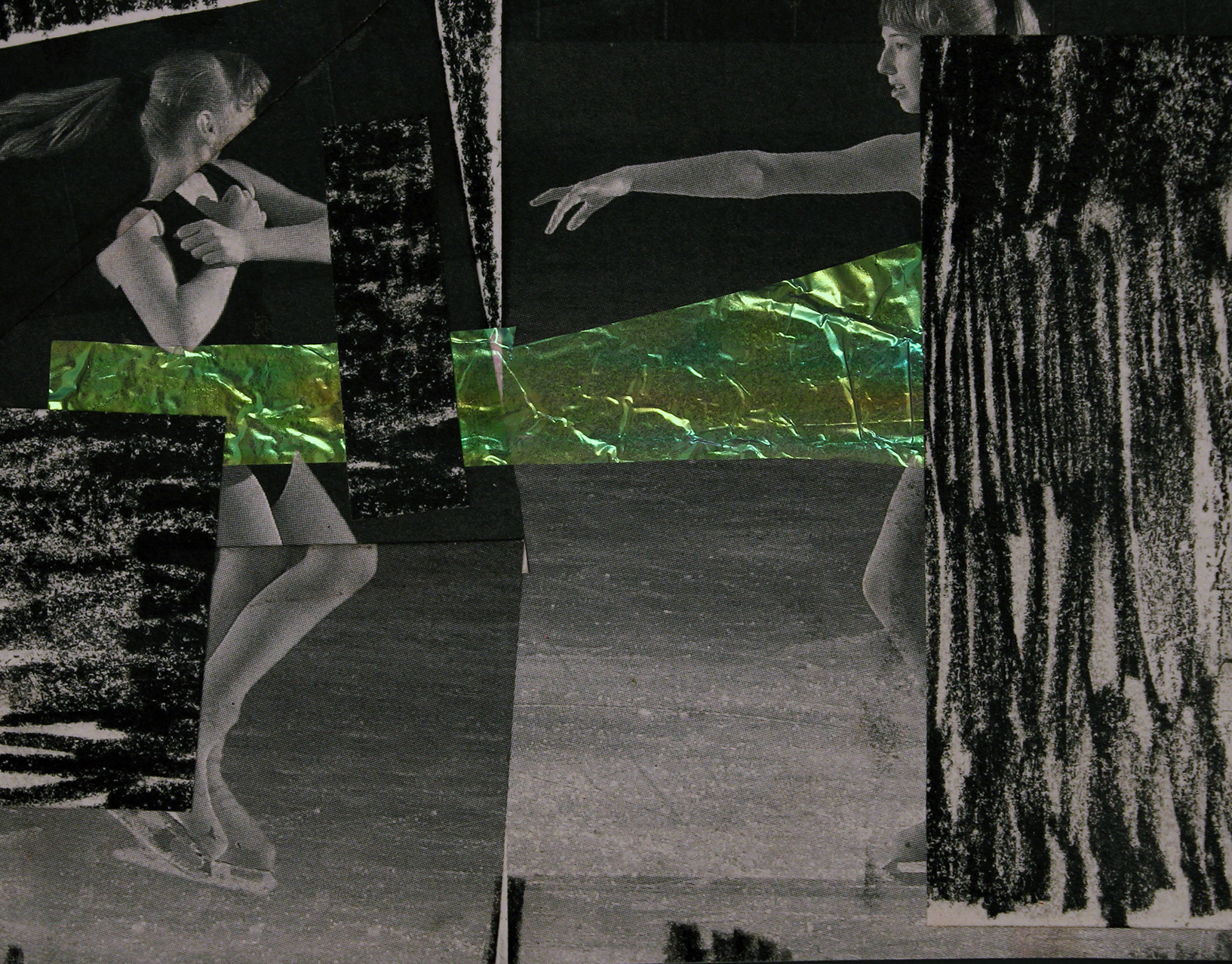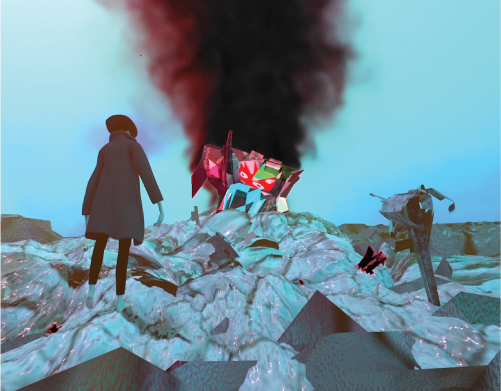Interview with Jamie Wolfe
from MM05, released March 2020
----
from MM05, released March 2020
----
Jamie Wolfe is a Los Angeles based Animator whose electric, brush stroke-laden drawings are instantly recognizable and not easily forgotten. Her patterned animations buzz frantically on screen, as elastic characters throb to and fro. The frenetic energy bleeds into her films in the form of hard cuts, looping, and equally dynamic sound design. Visual and situational tension speaks to an unfiltered human experience born from the hectic 21st century world we are constantly inundated with. Jamie’s work pays homage to classic cartoons and indie animators like Sally Cruikshank in its palette, bodily extremes, and textures. Outside of personal filmmaking, Jamie has created animation for clients like Gucci, Adult Swim, and Dublab and has directed and animated music videos for King Krule, Kevin Morby, and Hollis.
----
----
Mostly Moving: Hi Jamie, could you start by introducing yourself and telling me how you got into animation?
Jamie Wolfe: My name is Jamie Wolfe. I live in Los Angeles, California and I make animation. I was born in Winston-Salem, North Carolina. My mom started going into labor with me on her 29th birthday while eating at a seafood restaurant because, as she put it, she “was eating shrimp that looked like tiny babies.”
I’m the oldest child of two artists, so this is all coded into my DNA. My first exposure to animation as an art form came via my dad, who as a hobby would make short claymation experiments. He’d do them late night with the family video camera on the basement floor. He’d (tragically!) reuse those tapes later to record shows off the TV, so you’d be watching a taped episode of the Simpsons and suddenly it would cut to one of his stop-motions. Those were actually the only times I was able to catch a glimpse of them, because otherwise he’d keep them to himself. But it was enough to make me aware of the fact that a human was behind the cartoons I watched on TV.
Wolfe's Father with Clay Characters
I didn’t make any serious attempts to animate until about a decade ago. I was working as a graphic designer (I majored in graphic design in undergrad) and living in Brooklyn. My friend started making these short-animated gifs to promote a WWF watch party he hosted every week. I‘m not really into wrestling so I never attended the parties, but thank god he kept me CC'd on the invites! When I found out that he was just making them in Photoshop, I started googling tutorials and taught myself to make my own. My first animated piece was a neon blue character jerking around the screen. I didn’t have a camera, so I moved the joints of the puppet around on my scanner bed. I had no context for how other people were animating at the time, so I completely made it up as I went. It wasn’t great or anything, but it was a breakthrough.
The experiments snowballed into a full-blown obsession and within the course of that year I started making hand drawn gifs during all free time I had, mostly nights and weekends when I wasn’t at my design job. It took me a while, but I slowly started to figure it out. It was such a pure time! I wasn’t making animations for any reason in particular – I just had to do it. At a certain point, I began uploading the gifs to a blog, and started becoming cognizant of the greater experimental animation community.
I continued like this for a while, designing by day and animating at night. I distinctly remember the moment I decided that I needed to put all of my eggs in the animation basket: I was riding my bike across the Williamsburg Bridge one summer afternoon and trying to see how fast I could make may bike go. “This,” I thought. “This is the purest pleasure I’ve ever felt.” As my body flew down the incline at top speed, I wondered if I had ever experienced anything in this physical world that has brought me that much joy. I realized there was only one other thing: making those gifs. I decided I needed to dedicate my life to one of these two activities. It’s not really sustainable to be a professional downhill bike rider, so I decided to be an animator.
I quit my full-time design job – still to this date one of the scariest things I’ve ever done – moved to California and enrolled in grad school at Calarts. Fast forward to now, where I’ve fully succumbed my life to the animation goddess. I split my time between making my own films, doing commission work out of my studio, and teaching animation.
MM: You’re not afraid of a bold color palette. Can you talk about your relationship to color and where the attraction to strong saturated tones come from?
JW: I actually got a B in the color theory class I took in college. Though, I think that grade mostly came because of the points I lost due to cutting my finger open with an X-Acto knife and dripping blood all over the Bristol board color swatches. That story has nothing to do with anything, but it felt important to share.
I’m really interested in the vibrations that come from juxtaposing extremes. I think color has a lot of power and I like to exploit that. Bright bold colors set certain expectations that I can break later. I like the vibrations that come from drawing an audience in with playful colors, then immediately repelling them with grotesque exaggeration and dizzying plot lines.
MM: Your drawing style is immediately recognizable. Have you always drawn this way, or has it been a progression?
JW: How I draw has definitely evolved as I gain skills and find new references/inspiration, but I think the core of my “style” has always kind of been there. Much of my style is really just the byproduct of a process built within the boundaries of me as a person. I’ve never been interested in hiding the fact that I’m a human making a series of drawings on paper, so most of what I make looks the way it does because I’m just embracing what comes out when I let my hand take control. For instance, I move and think quickly so I choose tools that allow me to get my ideas down the page just as fast. I’m pretty messy, so I leave room for things to be drippy and smeared. I’m also not great at sitting still, so I try to make the way I work as physical as I can. I’m always standing up and trying to get my shoulder into it. That all has an impact on how things turn out stylistically. Ironically, if I think too much and try to do it on purpose, it usually doesn’t really come out the same.
MM: The Characters in your work feel like they exist in a bizarro cartoon world. Do you pull a lot of inspiration from cartoons and comics?
JW: The fact that cartoon bodies don’t have boundaries is my favorite thing in the world. I’m really interested in the ways we can exploit that to communicate emotions that the human body can’t. That’s the whole point of animating anything, if you ask me. It’s funny, I recently took a clowning class with two animator friends and noticed myself trying to move my body the way I move my characters. It’s just not as good when gravity is involved.
A big part of my life is centered around understanding and dissecting the mechanics of how masters like Tex Avery or Chuck Jones designed and moved their characters through space. It’s not that I’m trying to do what they did, but there are always little nuggets of inspiration within how they pulled off that stuff. And yes, lots of influences from underground comix (and that sort of thing) are also woven in my work.
MM: The flat colors of your characters are juxtaposed by richly textured backgrounds. Do you spend a lot of time on visual design before you animate?
JW: I’ll have a general idea of what I want, but it’s rare that I make cohesive style frames beforehand. I usually just draw into it, then either go with it or redraw it again until it feels right. Also, whenever possible, I like to work with a “kit of parts” mindset where I will make a bunch of attributes/backgrounds/elements and then arrange them accordingly until I figure out the shot. It’s nice to leave room for surprises and an element of discovery. It sometimes takes longer (I make a lot of animation that ultimately, I don’t use!) but it’s worth it in the end.
MM: The movement in your animations is quick, jerky, and sporadic. Is it hard to keep track of such loose line-work heavy movement while animating?
JW: I think that just comes from the fact that I’m decidedly not keeping track! But yes, I think a lot about line. Everything I make is essentially just the result of a series of lines. I spend most of my free time thinking about ways to improve/distort/interrupt my line making process.
I saw a show at the Museum of Neon Art a few years ago and found it really interesting that the way the neon bounces around in the tubes was just as important as the shape the tubes are bent into. In a way that’s what I am trying to do. I want the energy in the lines that build my characters to convey just as much as the character itself.
MM: Outside of the dazzling animation and colors, the timing and editing of your films are really well executed. How do you approach structuring your work?
JW: I like telling stories that mimic unfiltered, distracted thought. So, I use a lot of hard cuts, loops, repetition, and unbridled rhythms. That’s my second favorite part of the process for me, actually. (Second to the actual animation.) It’s all pretty intuitive.I don’t know what I want timing-wise until I see it.
MM: There’s a certain anxiety that flows through your work. Is this something you’re aware of, or does it comes out organically?
JW: I am extremely interested in the line between high-vibration emotions like anxiety, excitement, fear, and mania. All of those frenetic emotions are actually quite similar on a physical level – the difference is how they are framed in the mind. As a human, I live within these extremes, so in a way I’m trying to use that energy and direct it into every fiber of what I make. I feel like my ultimate goal is to put as much of that energy into my work as I can (in the line, in the plot, in the design) so that, through the act of watching a film, those emotions can be triggered with the audience. And then everyone can have this shared guttural experience that is beyond words/images.
MM: Beyond your personal work, you’ve made animation for some pretty exciting clients. What’s that experience been like?
JW: Yeah, I’ve been lucky enough to work on some fun commissions! It’s a good challenge because projects like that get me out of my head and push me to be really direct with what I’m trying to communicate. I’ve been lucky to work with people who are super open to me taking the reins and putting my soul into it.
MM: Are you working on anything exciting at the moment?
JW: I’m always doing 10 things at once, bouncing around to whatever idea feels more inspiring in any given moment. I’m a big believer in flow and following it where it takes you. I’ve been working on a film on and off for past few years and now I’m really close. It’s like I’ve been pregnant for years. I’m in my 13th trimester at this point. And then I’ve been working on various little series, like of paintings of people eating cereal. I’m not sure what my plan is on that, but I can’t stop making them. Maybe the end result isn’t even really the point, actually. And then other bits and bobs – stay tuned!
If you enjoyed this interview, please consider purchasing a physical copy.
Your support keeps the magazine running, thank you.
Your support keeps the magazine running, thank you.
© Mostly Moving 2020
